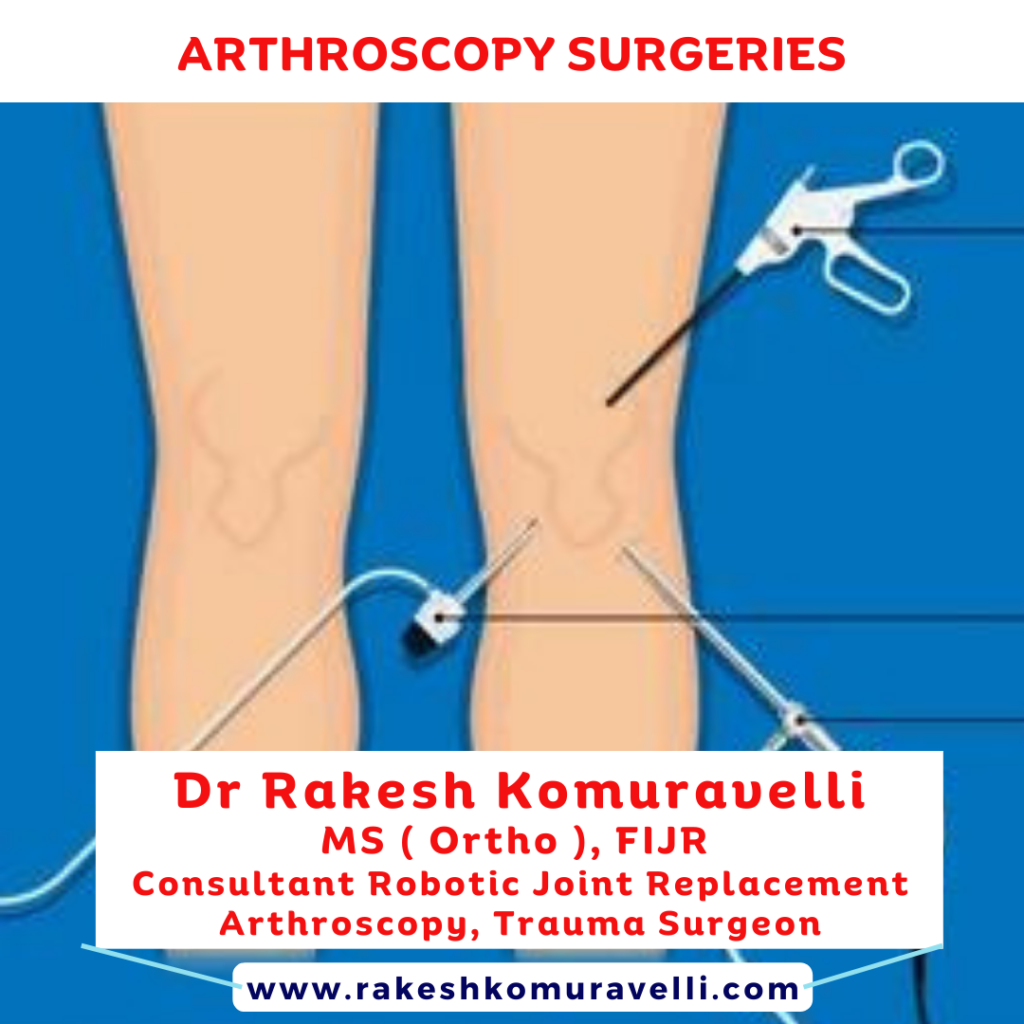

Arthroscopy is a minimally invasive surgical technique that allows doctors to diagnose and treat a variety of joint conditions using a small camera and specialized instruments. Arthroscopy can be performed on many joints in the body, including the knee, shoulder, hip, elbow, and ankle.
During arthroscopy, the surgeon makes a small incision near the joint and inserts a thin, flexible tube called an arthroscope. The arthroscope contains a small camera and a light source, which allows the surgeon to see inside the joint and identify any damage or abnormalities. The surgeon may also use specialized instruments to repair or remove damaged tissue or bone.
Some common arthroscopic procedures include:
Knee Arthroscopy: Knee arthroscopy is a common procedure used to diagnose and treat a variety of knee conditions, including meniscus tears, ligament injuries, and cartilage damage. During knee arthroscopy, the surgeon may use specialized instruments to remove or repair damaged tissue, or to perform a knee replacement.
Shoulder Arthroscopy: Shoulder arthroscopy is a procedure used to diagnose and treat a variety of shoulder conditions, including rotator cuff tears, shoulder impingement, and shoulder instability. During shoulder arthroscopy, the surgeon may use specialized instruments to remove or repair damaged tissue, or to perform a shoulder replacement.
Hip Arthroscopy: Hip arthroscopy is a procedure used to diagnose and treat a variety of hip conditions, including labral tears, femoroacetabular impingement (FAI), and hip dysplasia. During hip arthroscopy, the surgeon may use specialized instruments to remove or repair damaged tissue, or to perform a hip replacement.
Elbow Arthroscopy: Elbow arthroscopy is a procedure used to diagnose and treat a variety of elbow conditions, including tennis elbow, golfer’s elbow, and loose bodies in the joint. During elbow arthroscopy, the surgeon may use specialized instruments to remove or repair damaged tissue, or to perform an elbow replacement.
Ankle Arthroscopy: Ankle arthroscopy is a procedure used to diagnose and treat a variety of ankle conditions, including ankle instability, ankle impingement, and cartilage damage. During ankle arthroscopy, the surgeon may use specialized instruments to remove or repair damaged tissue, or to perform an ankle fusion or ankle replacement.
Arthroscopy is a minimally invasive surgical technique, which means it typically results in less pain, less scarring, and a faster recovery time than traditional open surgery. However, as with any surgical procedure, there are risks and potential complications associated with arthroscopy, including infection, bleeding, and nerve damage. Your surgeon will discuss the risks and benefits of arthroscopy with you before recommending a course of treatment.
Arthroscopy surgery is a minimally invasive surgical procedure that allows a doctor to examine and repair joint problems through small incisions using a specialized tool called an arthroscope.
Arthroscopy surgery can be used to treat a variety of joint problems, including the knee, shoulder, ankle, hip, and wrist
Candidates for arthroscopy surgery are typically those who are experiencing chronic joint pain and stiffness due to conditions such as arthritis or injury, and have not found relief from other treatments.
Benefits of arthroscopy surgery include smaller incisions, less pain and scarring, faster recovery times, and less damage to surrounding tissue compared to traditional open surgery.
Recovery after arthroscopy surgery typically involves a period of rest, followed by physical therapy and rehabilitation to help restore strength and range of motion in the joint. Most patients are able to resume normal activities within a few weeks to a few months following surgery.
As with any surgical procedure, there are risks associated with arthroscopy surgery, including infection, bleeding, nerve damage, and allergic reaction to anesthesia.
During arthroscopy surgery, a small incision is made near the joint, and an arthroscope is inserted. The arthroscope contains a small camera that allows the surgeon to see inside the joint and make repairs as necessary. Other small incisions may be made to allow for the insertion of additional tools, such as scissors or forceps, to perform the necessary repairs.

